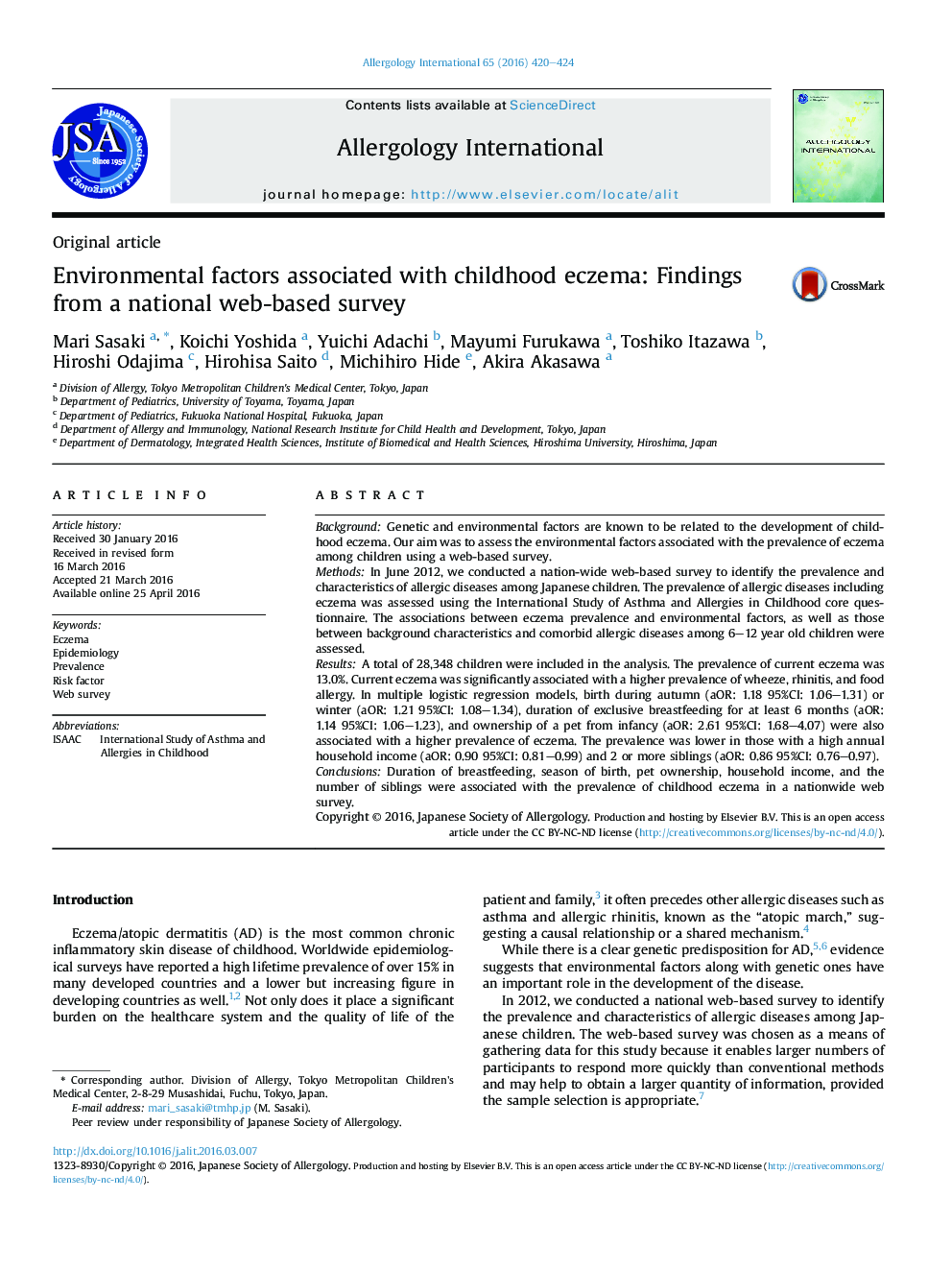| Article ID | Journal | Published Year | Pages | File Type |
|---|---|---|---|---|
| 5665173 | Allergology International | 2016 | 5 Pages |
BackgroundGenetic and environmental factors are known to be related to the development of childhood eczema. Our aim was to assess the environmental factors associated with the prevalence of eczema among children using a web-based survey.MethodsIn June 2012, we conducted a nation-wide web-based survey to identify the prevalence and characteristics of allergic diseases among Japanese children. The prevalence of allergic diseases including eczema was assessed using the International Study of Asthma and Allergies in Childhood core questionnaire. The associations between eczema prevalence and environmental factors, as well as those between background characteristics and comorbid allergic diseases among 6-12 year old children were assessed.ResultsA total of 28,348 children were included in the analysis. The prevalence of current eczema was 13.0%. Current eczema was significantly associated with a higher prevalence of wheeze, rhinitis, and food allergy. In multiple logistic regression models, birth during autumn (aOR: 1.18Â 95%CI: 1.06-1.31) or winter (aOR: 1.21 95%CI: 1.08-1.34), duration of exclusive breastfeeding for at least 6 months (aOR: 1.14Â 95%CI: 1.06-1.23), and ownership of a pet from infancy (aOR: 2.61Â 95%CI: 1.68-4.07) were also associated with a higher prevalence of eczema. The prevalence was lower in those with a high annual household income (aOR: 0.90Â 95%CI: 0.81-0.99) and 2 or more siblings (aOR: 0.86Â 95%CI: 0.76-0.97).ConclusionsDuration of breastfeeding, season of birth, pet ownership, household income, and the number of siblings were associated with the prevalence of childhood eczema in a nationwide web survey.
